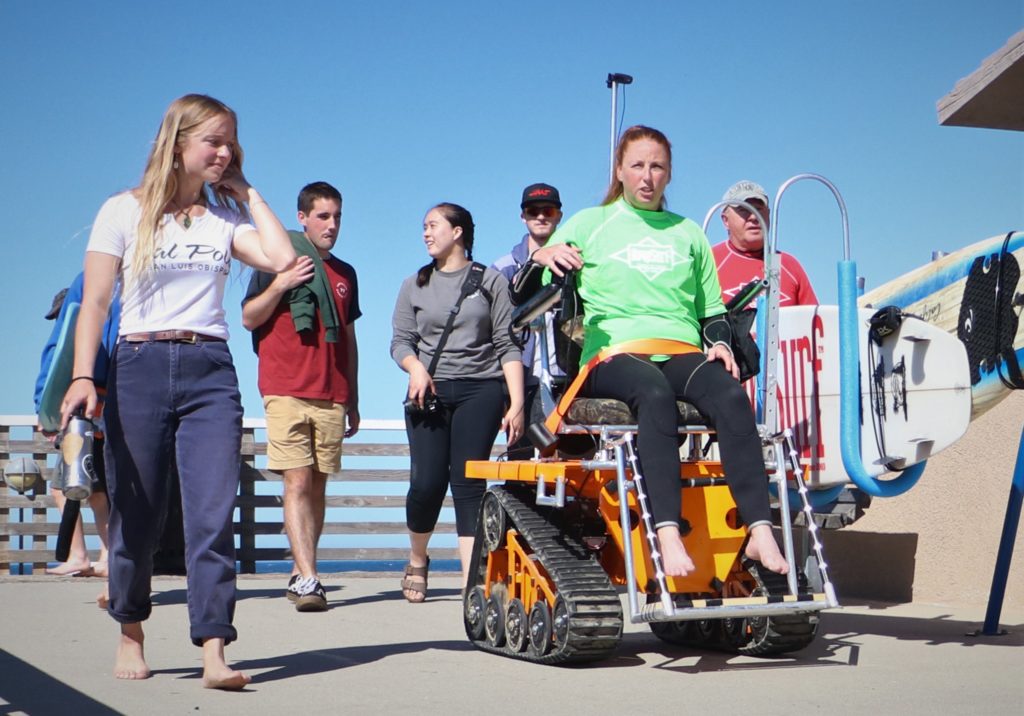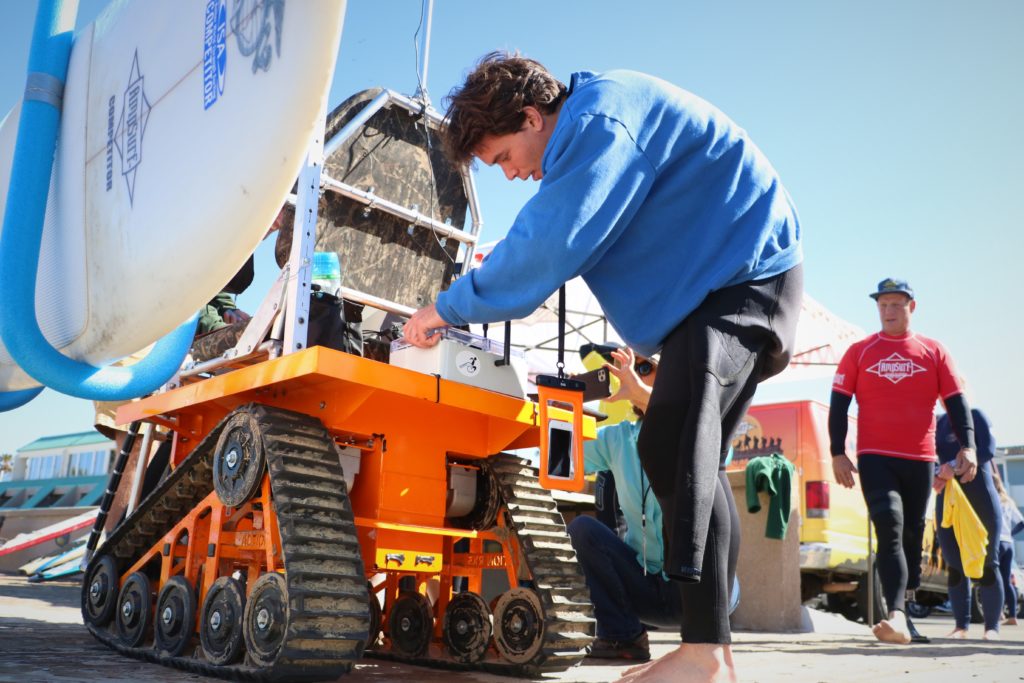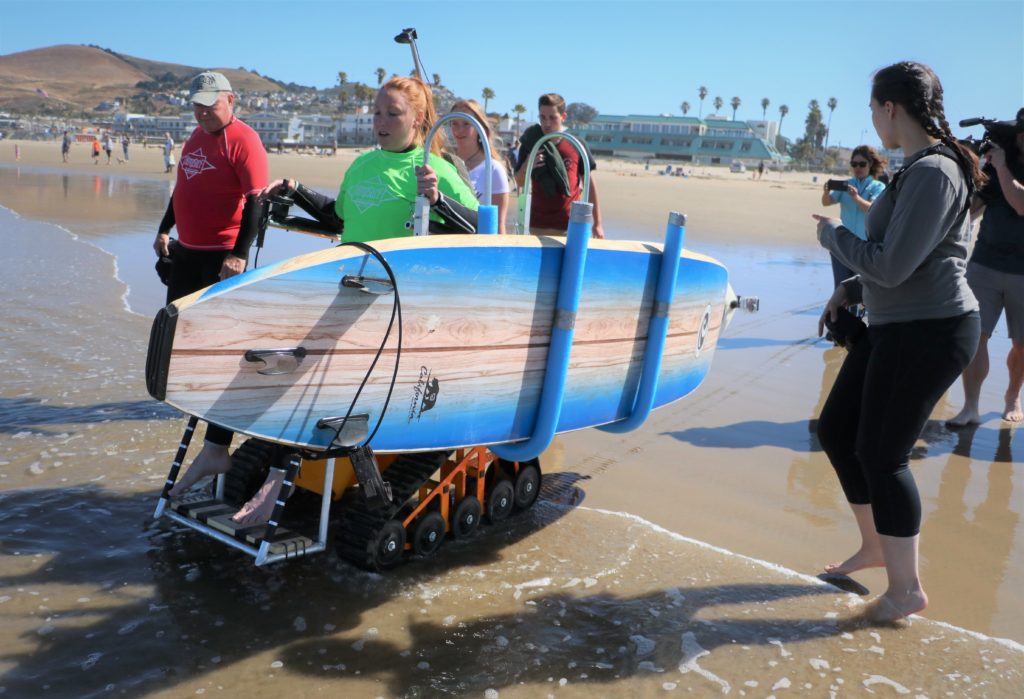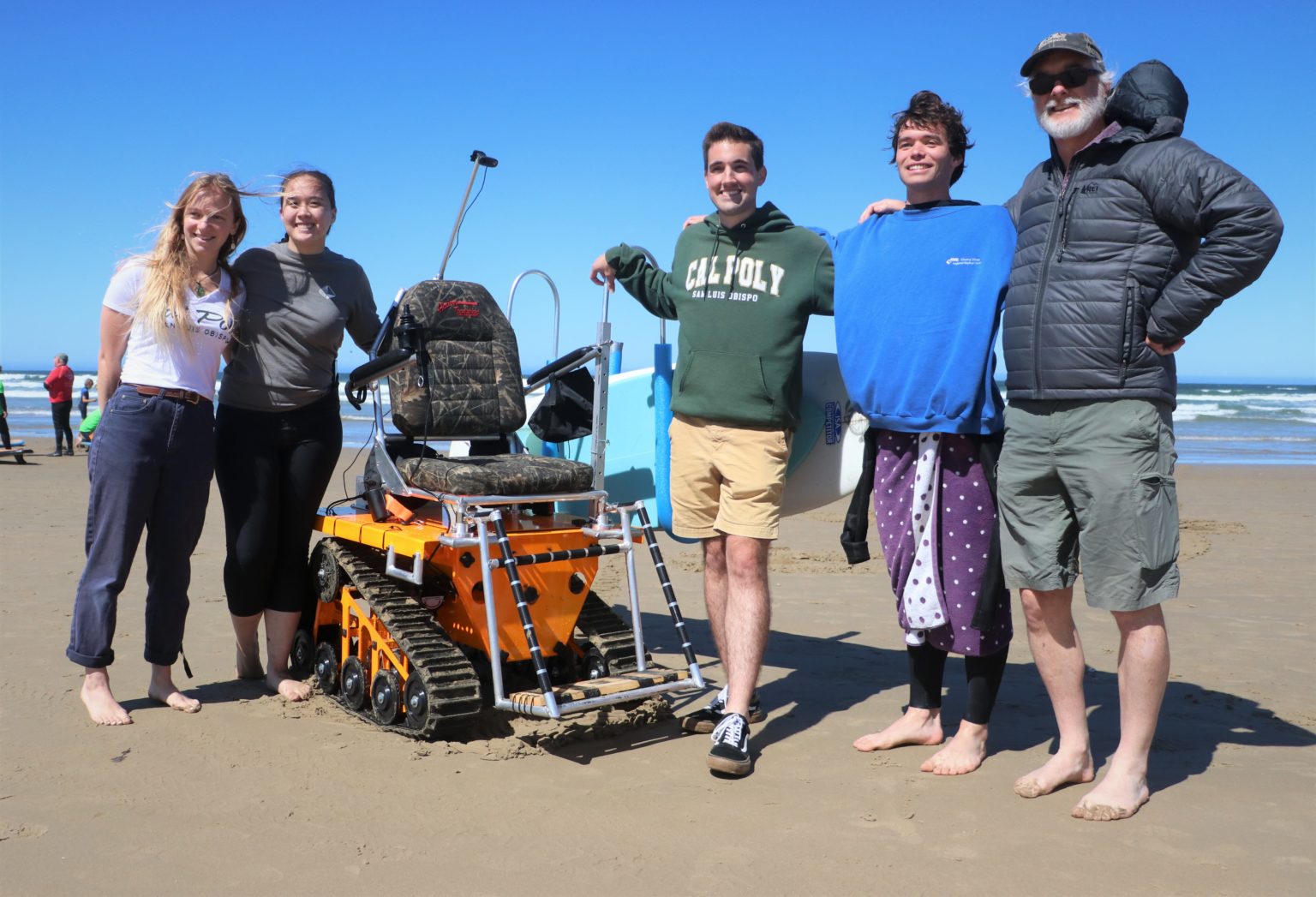When surfer Sarah Taylor rode to the Pismo Beach shoreline on an all-terrain wheelchair, it was just the first major test for an interdisciplinary senior project designed to help wounded vets.

The second entailed having mechanical engineering senior Seth Yakel paddle his surfboard out to the lineup, where he used a smartphone to remotely control the chair.
“We wanted to have the surfer be able to go in the water and push a button so the chair goes and parks itself and doesn’t get taken away by the tide,” Yakel said, his wetsuit still wet from the water. “And the other button flips it around when they come back and picks them up.”

When the chair passed both tests — a day before spring graduation — the senior project proved to be another example of how Cal Poly’s Learn by Doing ethos can be used to help others.
“This chair is ideal for a paraplegic, who has the use of their upper body but not their lower body, and for lower limb amputees who don’t wear their prosthetic in the water,” said Dana Cummings, whose nonprofit, AmpSurf, proposed the project.
Pismo Beach- based AmpSurf aims to bring the healing power of the ocean to people with disabilities through adaptive surf therapy. Many AmpSurf participants, like Taylor, are wounded vets.
In the past, surfers in the group have been carried to the water or pushed in wheelchairs with large wheels. But Cummings suggested a project that would allow surfers to get to the water without assistance.
“It’s a very complex project for students to do, but these Cal Poly students come through,” said Jim Widmann, chair of the Mechanical Engineering Department, who acted as a faculty advisor to the Waverollers team. “And I love the fact that we get to do something for Dana Cummings. It really makes the project feel extra special and worthwhile.”

With a base provided by Minnesota-based Action Trackchair, the students set out to create both a chair that adaptive surfers could easily exit and a rack to hold surfboards. To get an idea for design, the team met with an adaptive surfer involved with AmpSurf.
“I asked him some questions,” said Caitlin Tang-Hornbuckle, a materials engineering student. “How would you like your chair? How long are your legs? Where do you want your foot rest? Do you want it curved? Do you want it straight? How high do you want your surfboard off the ground? Do you want it adjustable? And, as he answered those questions, I factored his answers into the design.”
While each student had a dedicated discipline, they all wound up working on several aspects of the chair.
“Our major didn’t matter to a certain point because we were all working on everything a little bit,” said Lauren Knott, an industrial engineering major. “I did some work on the electronics and helped design the chair.”

The chair included a mini computer, which received signals from the smart device.
“It gets commands and then sends those commands to the motors and tells it to move,” said Josh Simpson, an electrical engineering graduate student, who worked on the coding.
The students also began working on an image recognition component to prevent the chair from hitting objects, including people, on the beach.

The project, which garnered nationwide publicity, is likely to continue with another team that will complete the computer’s vision capabilities, develop an app that can work with an Apple Watch and incorporate GPS functionality. But Cummings said the chair is already a benefit.
“I think it is amazing, and it will really impact the access for adaptive surfers,” he said.

